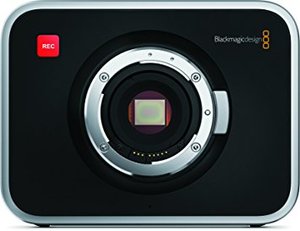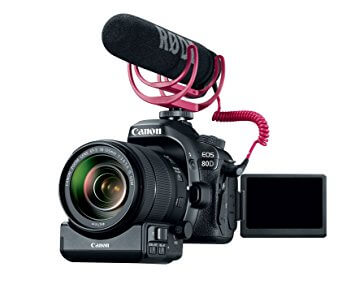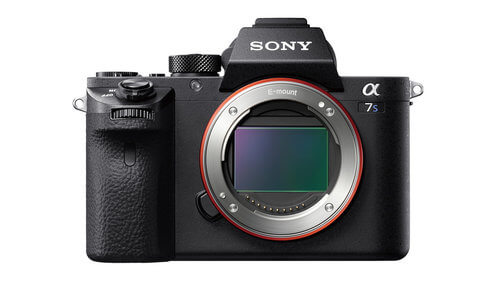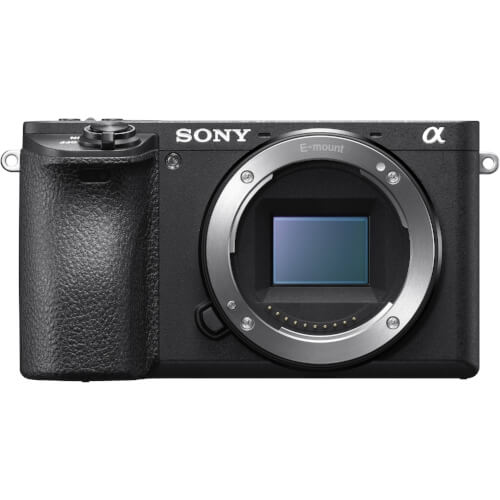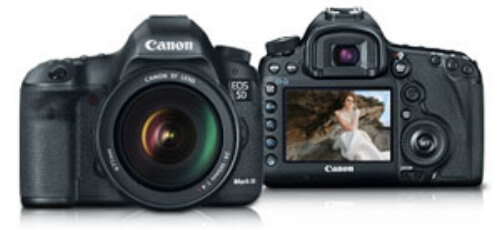Sony A7S II Review – How it Can Make you a Millionaire…
Perhaps you’ve heard the hype or read about it in one of our reviews on top cameras or blog posts. But certainly something has piqued your interest about the Sony Alpha A7S II and why it’s considered the very best low light camera in the market today.
Check pricing and availability here.
As a Sony fan boy and avid user, let me educate you on this fine specimen of camera technology.
STANLEY KUBRICK WOULD HAVE LOVED THIS KING OF THE LOW LIGHT FILMING.
Why the Sony A7S II is the Ultimate Low Light Camera
A full-frame camera with a difference, Sony Alpha A7S II is an ideal solution for low light shooting. The 12 MP, low-light, video centric camera is one of the video shooting stills camera available in the market. It was announced in September 2015 and has become quite popular in TV and film industry. Though it is a bit of niche camera it promises great video quality and immense shooting versatility.
The specification of this camera unfolds new surprises at every step. Let us have a look on them.
- Design and handling: Sony Alpha A7S II is a compact option. The full-frame camera is a look alike of other models of Alpha range. When compared to other DSLRs, it is certainly smaller than all of them. A few controls of the camera have been redesigned to enhance its using experience. The grip of holding the camera has been improved. The body of the camera is made up of magnesium alloy. Just because there is no proper weather seal; the shutters of the camera are designed in such a way that it does not let any moisture in.
- EVF and screen: Sony Alpha A7S II uses a 2.36 million dot finder. The magnificent quotient of the camera is higher but no one will complain about it. The colors of the camera are slightly saturated. Sony Alpha S7ii is known for its rear screen quality and improved resolution. The screen is movable and can be tilted up and down to make the shooting much easier. You can hook up the camera with phone or tablet without using any wire.
- AF and Performance: The camera uses a fairly advanced contrast detection AF with 169 focus points. There are a total of 9 central points which are divided into 16 segments. The contrast based system of Sony camera is pretty much reliable and fast. It works extremely well in dark conditions. Switching the focus from far points to nearby takes half of the normal time. The camera uses an electronic shutter if you use it on silent mode. Otherwise, it works mechanically. The OIS system of the camera can really do wonders.
- Image Quality: The camera is known to drop resolution hugely. It works against grain and each sensor pixel is large because of relatively low resolution. It produces an excellent image quality by enabling a good ISO dynamic range. As sensitivity increases, the camera holds onto the quality of the image very well. Due to its great stabilization capacity, the cameras do pretty well with certain photographers.
- Video: When it comes to shooting videos, the sensor style of the camera does not work downsides. It allows you to shoot to the high resolution up to 4K and produces amazing results. The great optical image stabilization quality of the hand held videos a smooth and professional look. The best part is that you can directly record 4K videos to SD card.
On the whole, this camera is specially designed for them who care more about low light performance.
Here are the official Sony Specifications and Features from Sony’s website:
LENS COMPATIBILITY: Sony E-mount lenses
TYPE: 35 mm
SENSOR: 35 mm full frame (35.6 x 23.8 mm), Exmor® CMOS sensor
NUMBER OF PIXELS (EFFECTIVE): Approx.12.2 MP
ISO SENSITIVITY (RECOMMENDED EXPOSURE INDEX)
Still images: ISO 100-102400 (expandable to ISO 50-409600), AUTO (ISO 100-12800, selectable lower limit and upper limit), Movies: ISO 100-102400 equivalent (expandable to ISO 100-409600 equivalent), AUTO (ISO 100-12800 equivalent, selectable lower limit and upper limit)
BATTERY LIFE (STILL IMAGES)
Approx. 310 shots (viewfinder) / Approx. 370 shots (LCD screen) (CIPA standard)
VIEWFINDER TYPE
XGA OLED, 0.5″ (1.3 cm) electronic viewfinder (color)
TYPE: 2.95 in (3.0 type) TFT drive
With the tech jargon out of the way, let me now discuss how and why I think Sony A7S II can help you build a thriving videography business (and possibly making millions… and millions of dollars).
MILLIONS… AND MILLIONS
How an A7S II can help your Wedding Cinematography
First check out our article on how to shoot only the very best wedding films. It’s not just about the camera (although I readily admit it helps), but also about technique and execution. The most important aspect of wedding cinematography is it’s very run-and-gun style of shooting. This is especially true if you’re going to use this camera for photography as well.
It’s about finding those precious candid moments to serve as B-roll in a montage or perhaps as a cut-away moment when you’re editing the long version of the wedding coverage.
At 2Bridges, we do love our FS7 and our Arri Alexas, but those cameras are very bulky. Although the FS7 can be easily fitted onto someone’s shoulders, it’s still bulky for run and gun shooting.
Consider this video we took from our video “Modern Music in Wedding Videos – Gangnam Style” (shot with FS7 and two “floating” Sony A7S II):
When we took that footage, there was easily 100 people and we had to contend with several photographers to get the best shot of that dance. We stuck an FS7 on sticks (tripod) at the back of the wedding venue, but it was immediately blocked by the mayhem of everyone trying to get a look at the Gangnam couple. Fortunately, one of my other videographers was in charge of being the “floater camera” and he was able to capture this magical moment with the A7S II.
If he had the FS7 or a C300, that would have been impossible to fight through the crowd and capture that moment. The weight and size of the SonyA7S II allows the shooter to capture magical, candid moments like this one. This is crucial if you want to build a successful wedding videography business. Clients pay you top dollar to find magical moments and instill that footage in the final cut or musical montage.
Hands Down – Sony A7S II is the best low light camera
Moreover, this was an impromptu setup. Originally, all this was supposed to be taken outside, but due to rain the dance and ceremony had to take place inside the wedding venue. Fortunately, we had lights with us and we were able to light the interior and treat it like a typical film shoot.
However, it was still darker than being outside. With Sony (the king of night time shooting), we were able to configure both of our Sony A7S II to take advantage of its low light capability. There is no comparison – Sony A7S II is the ultimate and best low light camera.
It’s very important to have low-light shooting capabilities for 2 main reasons:
- Lighting equipment is expensive and bulky to carry
- You’ll be shooting in dark cathedrals A LOT
Let’s examine the first point. In a typical film shoot, I will usually hire or take on volunteer Production Assistants to carry the lamp stands, the various Aputure and Dracast LED lights. When you’ve got a budget and a shot list, it’s easy enough to plan the logistics of the shoot.
BUT – weddings are like a box of chocolates. You just never know what you’re gonna get.
There could be chairs in the way. It could be limited places. Plus, the budget won’t really allow you to hire several production assistants to carry lights. There’s also the fact that most couples will not appreciate putting light stands, as it might not mesh well with their Game of Thrones wedding theme.
Thus, you have to do away with the light stands and work with what you’ve got. Most couples will just say:
“Well they’ve got ceiling lights…”
Every filmmaker knows that lighting is what makes anything cinematic. That’s the “magic” in movie magic. So without any lighting equipment (except for the video above because we got lucky), you’ll need to have a camera that shoot in dark venues while minimizing color/image noise when you get to post.
This is why a Sony A7S II is practically a must for any serious wedding videographer. You’ll be able to operate with little to no lighting. You’ll be able to get footage and images that will not require heavy lifting with “Neat Video” in Adobe Premiere when you’re in post-prod.
And when you finally, deliver the final product, the customer will be happy. You’ll be happy. And your bank account will be happy as you’ll likely get more referrals in the future.
The Sony A7S II, the best low light camera, will allow you to take stunning footage in dark environments and will help you build a thriving wedding videography business. Perhaps even make you a millionaire by having the bestest wedding video service in town.
How a Sony A7S II can help you make great music videos
I love music videos. I think they’re the best medium to study a cinematographer’s style as it’s pure cinema. At its core, cinema is the compilation of images to tell a story. With a music video, the director/editor/cinematographer can’t cheat by creating expositional dialogue.
Instead, they’re forced to compile a set of images that must mesh well with the video. Often, it’s fast and furious in these music videos and it almost feels like the camera is in tune with the beat. The camera pans, twists, zooms in, zooms out and does all kinds of things like in this Kendrick Lamar video.
Granted, Kendrick probably had 3-4 camera guys/gals, each with 3-4 camera assistants and probably shot everything in an Arri Alexa or RED. But when you’re an indie filmmaker, and you’re tasked to create a music video for an up-and-coming local artist, you won’t have the same resources as Kendrick Lamar. Yet you’ll still be expected to produce a good music film.
The Sony A7S II can help in this regard. Again, this is where its lightweight capability will be helpful. You can rent out or get a Gimbal – perhaps a Zhiyun which you’ll need for wedding videos. Or perhaps something more fancy like a Ronin. Because of Sony’s lightweight build (and because it’s a mirror less camera), you can easily fit it around a stabilizing machine and create nice tracking shots. You can pan zoom and make that “camera dance to the beat.”
And did I mention that Sony A7S II are great in low light? That’s very useful when you’re shooting in dark night clubs (‘cuz rappers gotta represent) or in an indoor parking lot (like in Kendrick’s video).
If you’re not into making wedding videos, then perhaps making music videos with a Sony A7S II is the way to go. It definitely has the features to create great music videos in any filming location and impress those local rappers with your bling bling cinematography.
How the Sony A7S II can help you make money with corporate videography
I’ve already touched upon the lightweight build of the camera and did I mention the low light capabilities of the A7S II? If I still haven’t driven it home, then here it is again.
Sony A7S II is the low light king of cameras.
With corporate videography, these features are certainly helpful. For interviews, it’s easy enough to setup to Sony A7S II to shoot over the shoulder interview scenes. If you want to show off your bling bling cinematography, perhaps add a third A7S II for a two-shot view of the interview.

Now, every filmmaker seems to be obsessed with RED cameras. Imagine using 3 RED cameras to shoot this interview. You’ll likely go bankrupt before you ever make any money in corporate videography. Three Sony A7S II doesn’t even equal 1/10 of some RED cameras.
What I’m getting at is this: Sony A7S II is cheap enough that you can own several of them and setup a multi-cam shoot.
CORPORATE VIDEOGRAPHY WITH MCKINSEY CONSULTANT
In corporate videography, the rates are usually higher than wedding videography. If you can consistently get corporate cinematography gigs, you’ll still get a decent return on investment (ROI) by buying one and renting two other Sony A7S II cameras.
You’ll impress your corporate clients, as you can shoot on a multi-cam and deliver a corporate interview like it was shot by a CNBC professional.
Obviously, having 3 RED cameras (or even 1) will be better. But not everyone has a sugar daddy or can win the lottery, so we have to start from the bottom. With it’s $3K entry price, the Sony A7Sii mirror less camera is one of the most economical entry points for any serious cinematographer, looking to shoot in 4K.
For corporate events, like a Christmas party or a pep rally:
TRY KEEPING UP WITH THIS GUY WITH AN FS7 ON YOUR SHOULDER. FUHGEDDABOUDIT!
The Sony A7Sii works well again because just like in wedding videography gigs, the ability to move around the place is key. Plus, if I haven’t mentioned before, it’s the king of low light cameras. In case, you get dragged into a Wall Street party at a strip club.
How the Sony A7S II can help you win an Oscar (then go on to become a millionaire)
I’ve already talked about in ad nauseam about these features:
- Best Low Light capability for a professional camera
- Egonomics and ease of use for camera movement
- Amazing entry price point for a 4K camera
Now, let’s talk about narrative films. Because if you’re like us at 2Bridges, we only put up with corny wedding singers, and boring corporate interviews because well… it helps pay the rent. You can certainly make thousands (perhaps millions if you’re the best in your area) in these two niches in videography. But we all know why we’re into videography and filmmaking in the first place:
It’s to make it to Hollywood baby!
Or at least be featured in the Tribeca Film festival. Or Sundance. You get what I’m saying…
In other words, the big glory and the big bucks is still in narrative and making feature films and/or TV shows that get featured in Netflix, HBO or AMC. Unless you’re last name is Spielberg or Tarantino, we can’t start from the top and we have to work our way up the Hollywood hierarchy.
This means working on short films and independent films (indie) to showcase our talent. With the Sony A7Sii, you can have camera that even Kubrick would have appreciated. In the film Barry Lyndon, Stanley Kubrick had to use a Carl Ziess Planar 50mm F/0.7 to shoot entire scenes lit only by candlelight. Because this lens was one of the fastest lens ever built (even used by NASA on their lunar missions), Kubrick could film in low light.
But you don’t need NASA type of lens (although admittedly having that Zeiss lens would be cool) to shoot stunning imagery. With the Sony A7S II, you have the technology to shoot not only in scenes lit only by candles, but in any low light situation. Great films will still be driven by great screenwriting, but you’ll still need a decent camera to translate words into moving images.
I can’t emphasize the 4K enough when it comes to narrative filmmaking. Now, new filmmakers make the mistake of shooting in 4K and creating final cuts in 4K. That’s not necessary (at least not yet) because most people still don’t watch 4K.
The great thing about shooting 4K is you can translate it into 1080p. Why would you do this?
Without getting into the specific technical details, if you shoot in 4K, you’ll capture a lot of info (i.e. colors, dynamic range). When you get into post and translate that into 1080p, that means you can zoom closer into the image without losing quality.
Have you ever taken a 1080p footage and when you get into post edit, you decided you want a close-up? You can’t. Because you’ll get image noise and it won’t look good. However, if you shoot in 4K and decide you want that close-up, you can zoom in with Adobe Premiere and you won’t lose image quality.
This is the hidden trick in most Hollywood films. They shoot in 8K or 16K (and in raw format of course) and then have highly trained editors zoom in and out of shots – in post-production!
At its current entry price, the Sony A7S II allows you to do this as well! Shoot in 4K and output to 1080p (which is still high definition) and showcase your cinematography bling bling.
I’ve already mentioned this before… At it’s current entry price, the Sony A7S II allows the budget filmmaker to also setup multi-cam shoots. When planning shoots, it’s helpful (not necessary) to standardize the filming. This means controlling the apertures of the lenses to having the same cameras to having consistent lighting in the room. The Sony A7S II is a much more economical option when trying to work with 2-3 cameras in a film shoot.
Finally, the A7Sii allows you to shoot in S-Log2 or S-Log3. This is Sony’s technical setting for shooting “flat” footage. If you’re making narrative films, it’s important to shoot mostly flat footage. This type of footage captures the highest dynamic range and captures the most colors. It’s out of scope for this guide to start talking about 8-bit vs. 10-bit and 4.2.0 versus 4.2.2 outputs, but just know in general, you want to shoot flat footage.
With its low light capabilities and S-Log settings, you can capture footage that editors (like myself) love. With these settings, editors can play around with the shadows, highlights and midtones to get the right look. Then color correct it to set the tone and mood for the specific scene. Even Kubrick didn’t have these magic tools!
As a budget filmmaker, the Sony A7Sii can help you create a magical film. Even the pros have used it and went on to be featured in Sundance. For example, several movies and documentaries that made it to Sundance in 2017 used Sony A7S and other Sony mirrorless cameras.
So once you’ve shot that great film with your Sony, send it to a few film festivals, be featured on Sundance and surely the millions… and millions will come pouring in. Just don’t forget to mention how it was all due to our filmmaking guides at 2Bridges!
Conclusion to this Guide on the Ultimate Sony Mirror Less Camera
Whether you’re a film hobbyist or a business owner, a Sony A7S II definitely should have a place in your camera game. If you’re looking to monetize or build a business around videography, it can certainly help you in these niches:
- Wedding videography
- Music Videography
- Corporate Cinematography
- Narrative Filmmaking
At an entry point of just under $3,000, it’s a great starting camera for the indie filmmaker. The 4K capabilities and the ability to shoot in S-Log are some of the reasons why even pros use it on their big budget films. These features will allow you to shoot stunning footage so you can deliver high quality content to your clients. And happy clients means more referrals, which means a few dollars closer to becoming a millionaire.
Did I mention it’s the best low light filmmaking camera in the market?
It’s simply the best – better than all the rest. You can shoot at ridiculous ISO and still be usable or at least editable in post, using Neat Video on Adobe Premiere.
It’s economical to setup multi-cam shoots with a Sony A7S II. Ever wanted to shoot that horror film shot only in candle light? Now you can with the A7S beast. So definitely check out this amazing camera.
Check pricing and availability here.
If anything, you should at least rent it out. Test out what you’ve learned in this comprehensive buying guide for the Sony A7S II and learn for yourself why it is without doubt – the ultimate and best low light camera in the market.
2Bridges Productions Copyright © 2017. Address: 25 Monroe St, New York, NY 10002. Phone: 516-659-7074 – All Rights Reserved.
We are a participant in the Amazon Services LLC Associates Program, an affiliate advertising program designed to provide a means for us to earn fees by linking to Amazon.com and affiliated sites.

